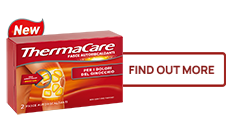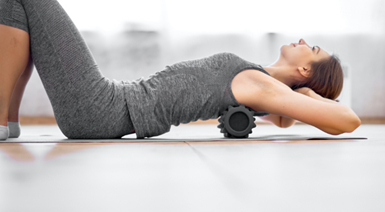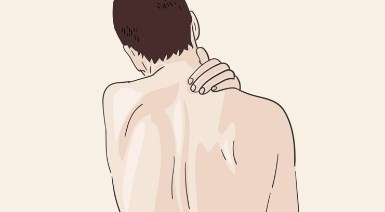Heat for neck pain
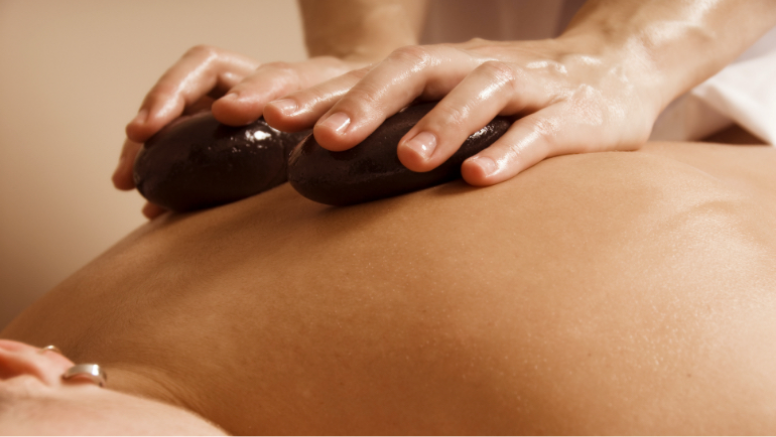
Contents:
For many people, heat is the method of choice for quick pain relief from neck pain. This is because the body reacts immediately to heat. It is good for tension-related pain and has a threefold effect by means of expanding the blood vessels, restoring the damaged tissue and reducing the perception of pain. And this is immediately noticeable in the neck: As soon as the pain subsides, the muscles can relax. Find out how heat therapy works here.
Heat therapy is a good choice for neck pain.
This is because the body reacts immediately to heat. It’s good for tension related neck pain, due to the mechanism of vasodilatation , which increases blood flow, with an increased tissue healing effect. Heat is also a good pain killer, because of its interactions with cutaneous nerves. As soon as the pain subsides, the muscles can relax. Find out how heat therapy works here.
Heat or cold for neck pain?
For neck pain caused by tension, heat is ideal to loosen the muscles and relieve the pain. However, if neck pain is not caused by tension, but rather by inflammatory processes, heat should not be used. Methods of cold therapy (cold compresses, cooling pain gels, etc.) are more suitable here. We recommend that the cause of the neck pain be determined by a doctor before treatment.
Heat could be very helpful to loosen up muscles and relieve pain, but we have to know when to use it. If Neck pain is caused buy an acute antinflammatory process, for example, heat is not recommended. Also if there’s a trauma, with a possible hemorrage, heat therapy is not recommended. Cold could be more helpful, but remember that cold is a good pain killer, not an antinflammatory therapy, neither is helpful to linfatic drainage alone.
However, we recommend you to be visited by a doctor who will be able to make a correct diagnosis.
Types of heat to relieve neck pain
There is a variety of heat applications for different needs. We have summarised the most common techniques and household remedies and explain how they work.
Heat wraps and patches
Heat patches and wraps are very popular for neck pain. They are particularly practical because they are attached directly to the painful area and work there over a long period of time. This means that they can be worn discreetly under clothing for hours without restricting your mobility. You can wear them very comfortably while on the go, in the office, at home when tidying up or doing gymnastics. This ensures a long-lasting effect: The heat penetrates deep into the tissue for hours, so that the affected muscles can loosen up.
Neck Heat patches are available in two versions: with and without active ingredients (self-heating). In the case of heat patches with active ingredients, substances such as capsaicin (cayenne pepper extract) and nonivamide (synthetic capsaicin) heat the skin by irritating certain nerve endings. This has a widening effect on skin vessels close to the surface, stimulates blood circulation and relieves pain. As with other ingredients, side effects can also occur with capsaicin and nonivamide: in the event of intolerance, local skin reactions such as burning and the formation of blisters can occur.

ThermaCare® HeatWraps for neck & shoulders do not contain any active pharmaceutical ingredients, but rather heat themselves up via an oxidation process. The soothing heat is brought directly deep into the muscle tissue. This application of heat is completely drug free and is generally well tolerated. Other advantages: ThermaCare® HeatWraps for the neck and shoulders warm up to approx. 40 °C within 30 minutes and maintain this heat constant for 8 hours. In the process, the heat penetrates deep into the muscle. This therapeutic effect provides gentle but rapid pain relief and a noticeable relaxation of the muscles.
ThermaCare prenetrates deeply
ThermaCare® HeatWraps not only increase the temperature on the surface of the skin, but also generate heat in the muscles.
-
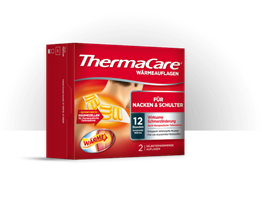
THERMACARE® For neck and shoulder and wrist
for the treatment of neck, shoulder and wrist pain
Heat ointments
Heat ointments and creams usually contain the active pharmaceutical ingredient nonivamide in combination with other active ingredients such as nicoboxil (active ingredient group of the B vitamins), capsaicin (cayenne pepper extract) or extracts from medicinal plants such as devil’s claw. These ointments, like the medicated heat patches, cause the skin to react to heat. Heat ointments can be used to support neck massage if there is no intolerance. Side effects such as local skin reactions can occur in this case too. Caution: Heat ointments must not get on mucous membranes or in the eyes!
Hot water bottle
The good old hot water bottle is certainly one of the most traditional household remedies for neck pain. However, compared to modern heat wraps and patches, their biggest disadvantage quickly becomes apparent: With the hot water bottle on the neck, much movement is no longer possible, neither when sitting nor lying down. And there is no way to use them while on the go. Another downside is that Hot water bottles don’t last as much as a heat wrap or patch, so you’ll need to heat up water a lot of times during the day.
Hot roll
The hot roll, one or two thick towels that are soaked in hot water and carefully rolled out and applied to the area to be treated, can be attached to the neck a little better than most hot water bottles, but they are still not suitable for an active lifestyle. Apart from that, they quickly lose heat like hot water bottles .
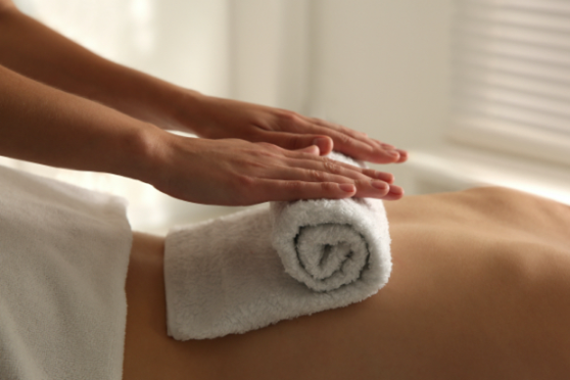
Heat pad for neck pain
Cherry stones, grape seeds, millet, spelled, buckwheat … grain-filled heat pads can be filled with very different types of stones and grains. This widely used household remedy is often used primarily for stomach pain. The pad or sachet is warmed up in the oven or in the microwave and placed on the painful area. For the treatment of neck pain, as in the case of a hot water bottle, the problem is that the use of grain-filled pads hardly allows mobility. In addition, the heat output is not constant for hours, as is the case with a good heating patch.
Caution: Contraindication
In the case of acute inflammatory processes (24 to 48 hours after the onset), heat therapy could be counterproductive as it would intensify the inflammatory process. Cardiovascular problems, circulatory disorders, diabetes fever and injuries in the area are also not indicated for heat therapy.
Heat therapy with electric heating pads and blankets
Heating pads and blankets are usually easier to drape around the neck and shoulders than hot water bottles or grain-filled pads. The constant supply of heat, which can be gradually regulated, and the washable cover are practical in this case. The big disadvantage of heating pads, however, is the power cord, which severely restricts freedom of movement. They are particularly suitable for use while lying on bed or sitting on a chair , but not, for example, for gymnastic exercises.
With modern heating pads you no longer have to worry about possible overheating. The common products on the market have various safety precautions such as overheating sensors and automatic switch-off features. Older models, however, should be thoroughly checked for suitability before use, or disposed of properly.
Infrared lamp for neck pain
Another popular household remedy for neck tension are infrared lamps whose infrared rays penetrate a few millimeters into the muscles and provide pleasant heat there. This loosens the muscles and stimulates blood circulation and the metabolism. Muscle areas in the neck and shoulders can be specifically treated with an infrared lamp or infrared heater.
For tension-related neck pain, two daily therapy units of 10 - 20 minutes are recommended; longer sessions can cause skin burns. Even if infrared light is helpful for tense muscles, the disadvantage is obvious: Here the exposure time of the heat is extremely short compared to ThermaCare® deep heat. And freedom of movement is enormously restricted during treatment.
Heat therapy in the sauna
The sauna is a good place to relax neck tension. There is the classic variant (e.g. Finnish sauna), in which the ambient air is heated to temperatures of up to 110 °C with a stove. The alternative to this is the infrared sauna, which heats the body directly, and only up to 70 °C. The infrared radiation penetrates deep into the tissue and ensures pleasant warmth from within. That is why the infrared sauna has a particularly beneficial effect on tension of all kinds.
No matter what type of sauna you prefer: You are however limited in terms of time and place in the treatment of neck pain. And if you do not have a sauna yourself, you will have to find ways to get this form of heat therapy.

Warm bath for neck pain
Warm water is good for relieving tension and the bathtub or shower at home offers the opportunity to loosen tense muscles at least for a short time. For a hot bath, we recommend relaxing bath additives with lavender, hay flowers or lemon balm. With the water from the shower head, tense shoulders and muscles in the neck can be massaged under strong water pressure. Since a warm bath should not last longer than 20 minutes, the duration of the heat is also rather short. And if the bathtub is too short, it is difficult, especially in the case of neck pain, to immerse the entire affected muscle area for a long time and in a relaxed manner under water.
Heat packs with fango and mud for the neck
Heat packs with fango mud and natural mud are also often used for neck pain. Fango and moor are mixtures with a high concentration of minerals (peloids), which are the result of geological processes and are considered to be beneficial for skin and tissue. As peloids can retain heat, they are widely used to treat back and neck pain. Unlike heating patches or heating pads, they do not keep the temperature constant for many hours. And they cannot be used everywhere either. Therefore, you have to rely on treatment at home or, for example, on a physiotherapy practice.
Summary: Heat for neck pain
Heat is a drug-free and gentle method to relieve tension related neck pain. Most of the methods described here can be used and combined at home without much previous knowledge. If you want to treat neck pain on the go, while at the office or during a neck exercises session, we recommend ThermaCare® HeatWraps for neck and shoulders. We recommend you to be visited by a doctor who will be able to make a correct diagnosis.
FREQUENTLY ASKED QUESTIONS
- Does heat help to relieve neck pain?
-
Heat helps relieve neck pain caused by muscular tension. This is because heat inhibits the transmission of the pain stimulus, promotes blood circulation and reduces the perception of pain. If the pain subsides, the muscle can relax.
- Is heat or cold better for neck pain?
-
Heat helps with tension-related neck pain. It penetrates the tissue, improves blood circulation there and reduces the perception of pain, so that the tense muscles can relax. Cold is the best choice for acute inflammatory processes (24to72h)
- Is it better to treat a stiff neck with heat or cold?
-
If the neck is stiff due to strong tension (e.g. due to a cold draft or poor posture), heat treatment is appropriate. Heat loosens the muscles and relieves pain.
